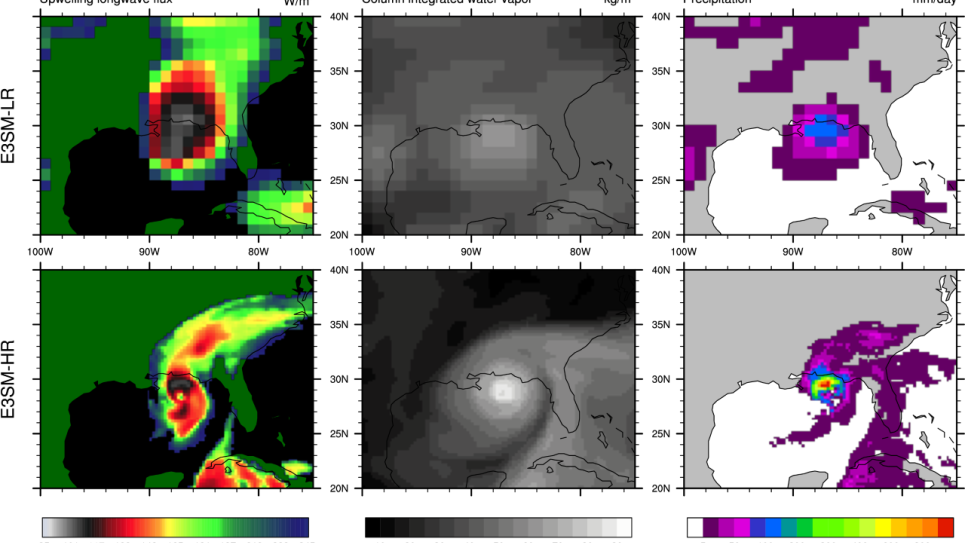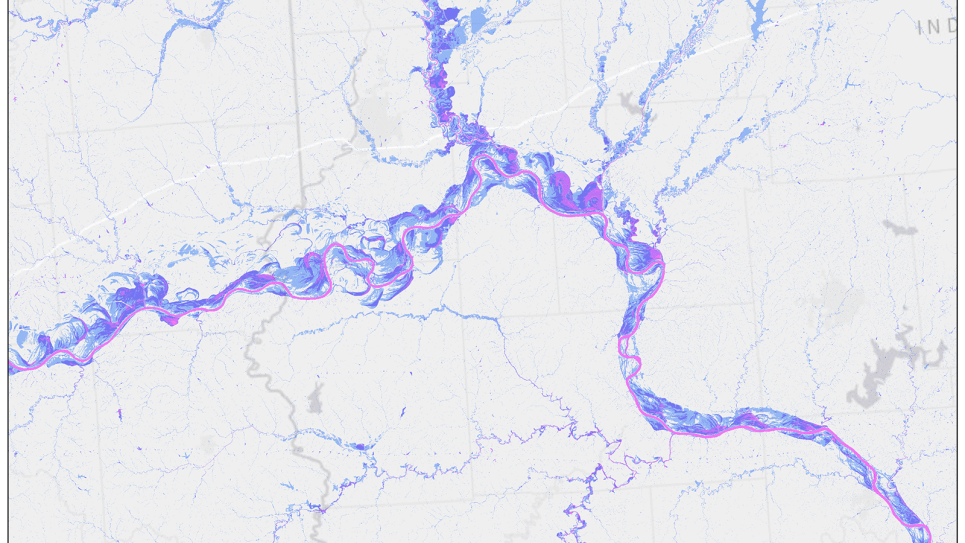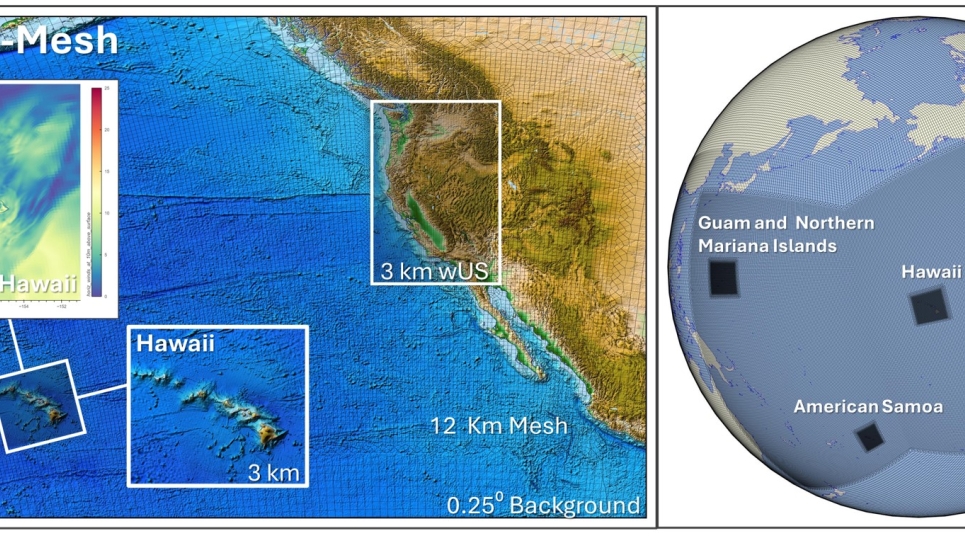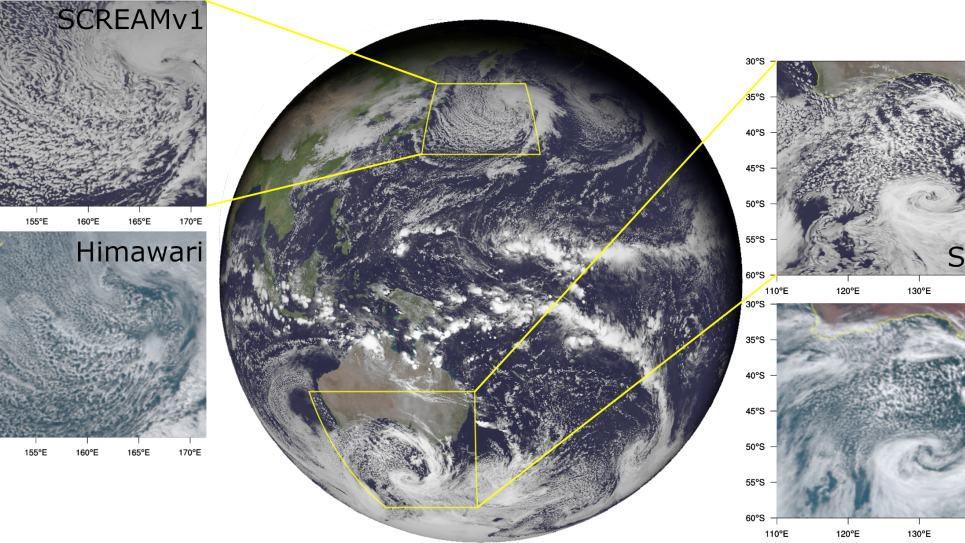
A tropical cyclone as found in climatological simulations with the Energy Exascale Earth System Model (E3SM) run at low resolution (top, 110km grid spacing) and high resolution (bottom, 28km grid spacing). Columns show (from left to right) upwelling longwave radiative flux, column integrated water vapor, and precipitation rate. While the low resolution tropical cyclone is discernible as little more than a blob of convective activity, the high resolution simulation produces a storm with a clear eye and spiral rain bands.


